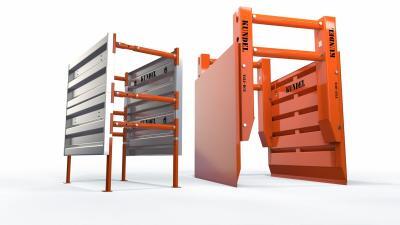What is a Borehole?
A borehole is a narrow and deep hole drilled into the Earth’s surface, typically for the purpose of extracting groundwater, oil, gas, or mineral resources. Boreholes are also used for scientific research, monitoring environmental conditions, and conducting geological surveys.
The process of creating a borehole involves using specialized drilling equipment, such as a drill rig or a drilling machine, to penetrate the ground. The drilling process may use various drilling techniques, such as rotary drilling, percussion drilling, or directional drilling, depending on the specific purpose and geological conditions.
Boreholes can vary in depth, ranging from a few meters to several kilometers deep, depending on the intended use and geological requirements. They are typically cased with steel or PVC (polyvinyl chloride) pipes to prevent the walls from collapsing and to ensure the integrity of the hole. The casing also helps to protect the surrounding environment from potential contamination.
In the context of groundwater extraction, boreholes are equipped with screens or perforated pipes in the lower section to allow water to flow into the borehole from the surrounding aquifer. Pumps are used to extract the water to the surface for various purposes, such as drinking water supply, irrigation, or industrial use.
Overall, boreholes play a crucial role in accessing subsurface resources and conducting geological investigations, providing valuable information about the Earth’s composition, water resources, and potential energy reserves.

Trench Safety Equipment: Trench Boxes Manhole Boxes, Bedding Boxes, Road Plates
Here are some additional details about boreholes:
- Types of Boreholes: Boreholes can be categorized based on their purpose. Some common types include:
- Water Boreholes: These are drilled to access groundwater sources for domestic, agricultural, or industrial use. The depth of water boreholes can vary depending on the location and availability of water.
- Geotechnical Boreholes: These are drilled to gather information about the subsurface conditions, such as soil composition, rock layers, and groundwater levels. Geotechnical boreholes are important for engineering projects, construction planning, and soil stability assessments.
- Mineral Exploration Boreholes: These are drilled to explore and extract mineral resources, such as ores, precious metals, or fossil fuels. Geologists use mineral exploration boreholes to analyze the composition and quality of the subsurface deposits.
- Environmental Monitoring Boreholes: These are drilled to monitor environmental factors, including groundwater quality, contamination levels, and subsurface movements. They are commonly used to assess the impact of human activities, such as waste disposal or industrial operations, on the environment.
- Borehole Construction Process: Borehole construction involves several steps:
- Site Selection: Choosing the location for a borehole involves considering factors like geology, proximity to water sources, and accessibility for drilling equipment.
- Drilling: Specialized drilling equipment is used to penetrate the ground. The drilling method depends on the geological conditions and the required depth. Common techniques include rotary drilling, which involves a rotating drill bit, and percussion drilling, which uses repeated impacts to break the ground.
- Casing: As the borehole is drilled, it is lined with a casing made of steel or PVC pipes. The casing provides stability to the hole, prevents cave-ins, and isolates different geological layers.
- Grouting: In some cases, the space between the casing and the borehole walls is filled with grout, a cement-like material. Grouting helps to further stabilize the borehole and prevent contamination from adjacent formations.
- Completion: Once the desired depth is reached, the borehole is equipped with appropriate infrastructure. This may include screens or perforated pipes in water boreholes, pumps for water extraction, or instruments for monitoring and data collection.
- Maintenance and Monitoring: Boreholes require ongoing maintenance and monitoring to ensure their efficiency and safety. Regular inspections, cleaning, and repairs are conducted to address any issues that may arise. For water boreholes, periodic water quality testing is crucial to ensure the water remains safe for use.
- Borehole Safety: Safety precautions are essential during the drilling and operation of boreholes. Proper training and adherence to safety protocols are necessary to prevent accidents, ensure the stability of the borehole, and protect workers and the environment.
Boreholes are valuable resources for various industries and scientific endeavors, providing crucial information about the Earth’s subsurface, facilitating resource extraction, and enabling the sustainable management of water and environmental resources.

